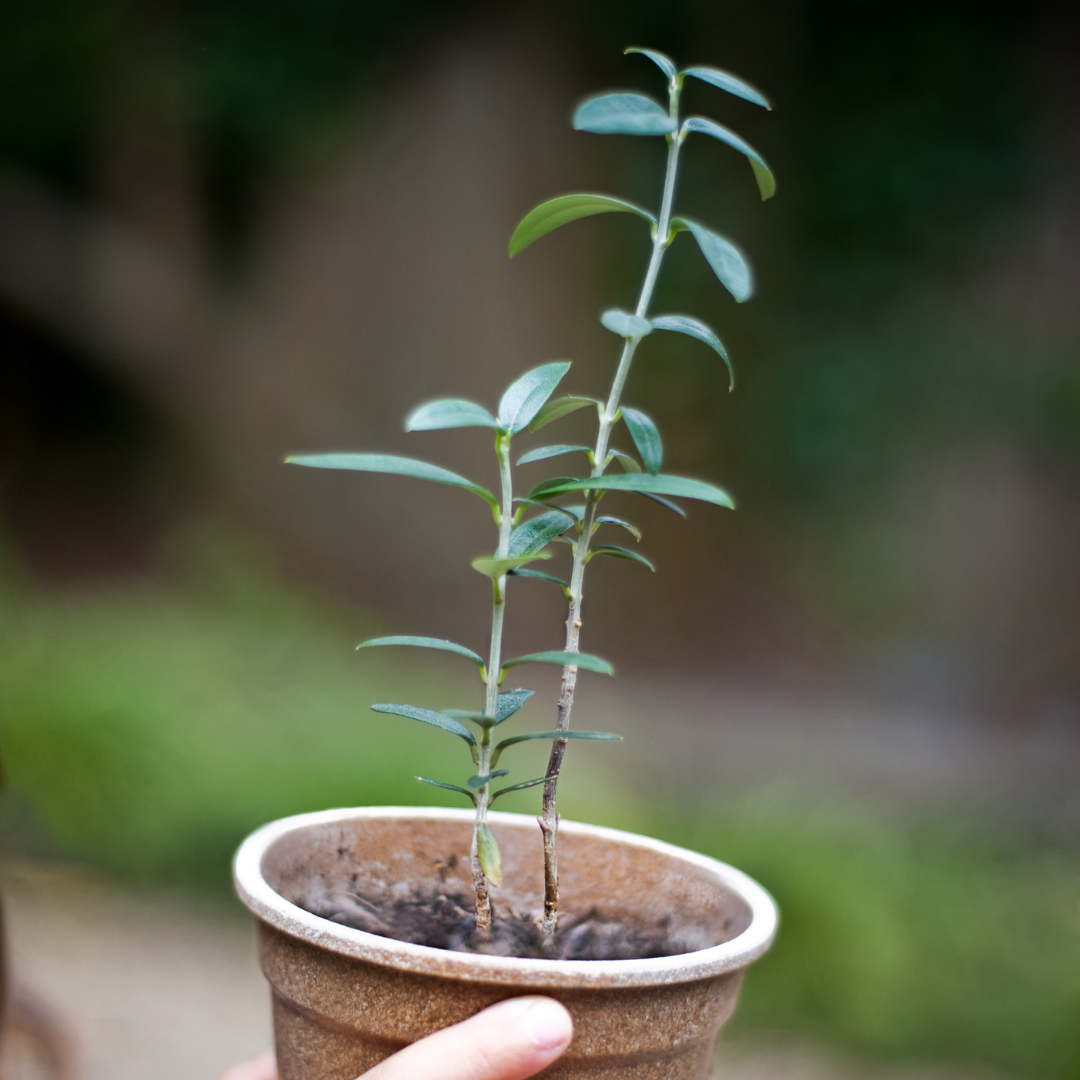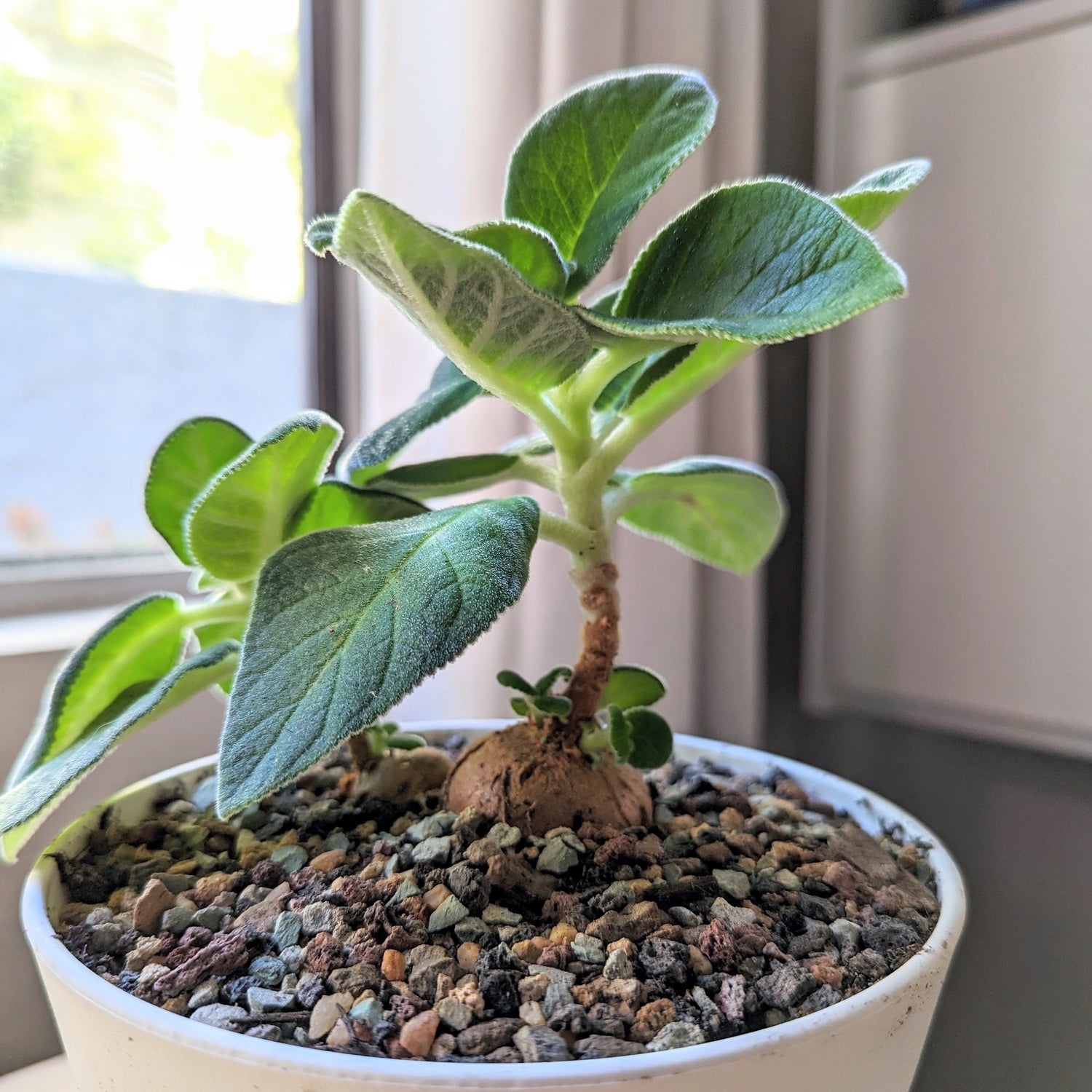Spring is the perfect time to plant seeds and kickstart your (indoor) garden for the growing season. There is so much information and inspiration for starting a garden in your backyard…but what about people(like myself) who live in apartments with tiny patios not conducive to gardening at all? Luckily there are lots of options for us other than only keeping houseplants :) Plants like herbs and even some veggies can be grown indoors, with or without grow lights!
Here’s a little breakdown of 5 of some of the most easy-to-grow herbs that you can grow indoors, as well as some care tips (If you want to get your hands on some of these, I have them available in my shop here) Let’s get started!
1) Basil
Perhaps one of the most popular herbs out there. You may have purchased one or two potted plants at a grocery store before and may or may not have had luck keeping it alive. Luckily, growing these plants from seed is very easy as long as you get the basics down.

Germination: First off, to prepare the seeds you can soak them in warm water overnight. This step isn’t necessary, but it can help ensure successful germination.
To plant the seeds, plant them 1/4” deep in well draining potting mix. Keep them warm, moist and brightly lit and they should germinate in 7-14 days. It can help to cover the container with a plastic tray or bag to maintain the moisture in the soil. Make sure to remove the plastic tray/bag when the seedlings sprout to offer them some air circulation, which helps strengthen the plants.
Light: Anywhere from an east-facing window to full sun would be best for Basil.
Water: Basil likes to be kept moist, but not soggy. Water when the soil feels dry to the touch and make sure not to miss waterings.
Other tips: Basil doesn’t do well in cold weather so make sure you keep the plants warm. Once the seedlings are big enough, thin them to be 6-10” apart. You can expect the plants to mature in 70-79 days. Once the true leaves start to grow, you can begin feeding basil seedlings with a weak dose of liquid fertilizer. Then slowly increase it to full strength as they get larger.
(Find Basil seeds here, or get them along with other herbs in the ‘Cooking Herbs’ collection!)
2) Thyme
Germination: Spread seeds evenly on well draining potting mix and cover them with soil so they’re about 1/4” deep, and place in a bright and warm spot. Make sure the soil remains moist and they should germinate for you within 8-20 days.
Once the seedlings start to grow in, gradually thin the plants to 18-24” apart. The plants should reach maturity in about 85 days.
Light: Thyme can be grown in a bright spot indoors, ideally by a west or south facing window so it can get some direct sunlight. If you’re able to, give Thyme around 6 hours of sunlight.
Water: Allow the soil to dry out between waterings, and water thoroughly until the water drips through the drainage holes with each watering.
Other tips: A clay pot is ideal to grow Thyme since it’ll prevent excess moisture to build up in the roots. Make sure your planter has good drainage and you should have a happy plant! Make sure to keep the plant well-trimmed for the best flavor.
(Thyme seeds can be found here, it’s also in my ‘Cooking Herbs’ collection)
3) Cilantro
Cilantro has an extremely unique flavor, and If you’re a fan of Cilantro, you’re in luck, because it’s a great contender for your kitchen herb garden!

Germination: When planting cilantro seeds, plant then 1/4” deep in well-draining potting mix and provide good light and moisture to the seeds. They should germinate within 6-20 days. As they grow, thin the seedlings to be ~3” apart. The plants should mature in 50-55 days.
Light: Provide a good light source to your cilantro plants, a west/east or south facing window would be best. The more light you can offer, the better.
Water: Make sure you only water cilantro once the soil is dry to the touch to prevent root rot.
Other tips:
An unglazed terra cotta pot with good drainage is ideal for growing cilantro. Plant it in potting mix together with sand to offer better drainage, and fertilize it regularly.
(Buy your own Cilantro seeds here, or get them along with other herbs in the ‘Cooking Herbs’ collection that you can find here)
4) Lavender
Lavender leaves and flowers have a lovely aroma, and as a result have many popular uses ranging from essential oils to calming teas. They’re also just beautiful to look at so if you’re just looking to add some greenery and flowers to your kitchen garden, consider growing some lavender!

Germination: To get the best results, provide cold stratification for the seeds. You can place them in a ziploc bag in a moist paper towel and leave them in the fridge for a month. Check on them on a weekly basis to make sure the paper towel is still moist and if the seeds germinate, plant them in soil. They should sprout for you within 14-30 days and then transplant the seedlings when they have 2+ sets of adult leaves.
You can also start them in a seed tray, just be aware you may not have as many seeds germinate successfully as you would with cold stratification.
Seeds should germinate within 14-30 days and it’ll take until the 2nd year for you to have fully mature plants, although you may see some blooms in the first year.
Light: Lavender plants can grow fine indoors by a bright window, though the more light you can offer, the healthier the plants will be and the more blooms they’ll produce.
Water: Water when the soil feels dry to the touch, and make sure to not overwater.
Other tips: Lavender does best in terra cotta containers that prevent excess moisture buildup and allow the roots to breath. You can fertilize your lavender every ~3 weeks during the growing season.
(Lavender seeds can be purchased here, it’s also in my ‘Herbal Teas’ collection that you can find here)
5) Lemon Balm
Lemon Balm is a lovely lemon-scented herb(thus the name) that can be used in teas, salads, vinegars, and the list goes on. Luckily it’s a easy and quick-growing plant that you can keep indoors.

Germination: Plant the lemon balm seeds 1/4” deep in well-draining potting mix in a bright spot and keep moist. The seeds should germinate for you within 7-14 days, and in the right conditions you can expect to have mature plants in 40-60 days.
Light: Lemon Balm can handle up to 5 hours of sunlight, but can also grow fine indoors. The more light you can offer indoors, the better the plants will do!
Water: Only water when the soil gets dry, and make sure you don’t miss waterings. The plant will show you when it needs water by wilting.
Other tips:
Make sure you planter and soil drain well. Give Lemon Balm regular doses of diluted fertilizer throughout the growing season and you should have a happy, lush plant!
(Lemon balm seeds can be purchased here, it’s also in my ‘Herbal Teas’ collection that you can find here)
That’s it for this list! Have you tried growing any of these herbs indoors and what success did you have?
Want more content like this? Check out these posts:



 Thyme is a staple herb used in various cuisines- luckily it’s also extremely easy to grow and is definitely an herb you can grow indoors!
Thyme is a staple herb used in various cuisines- luckily it’s also extremely easy to grow and is definitely an herb you can grow indoors!

